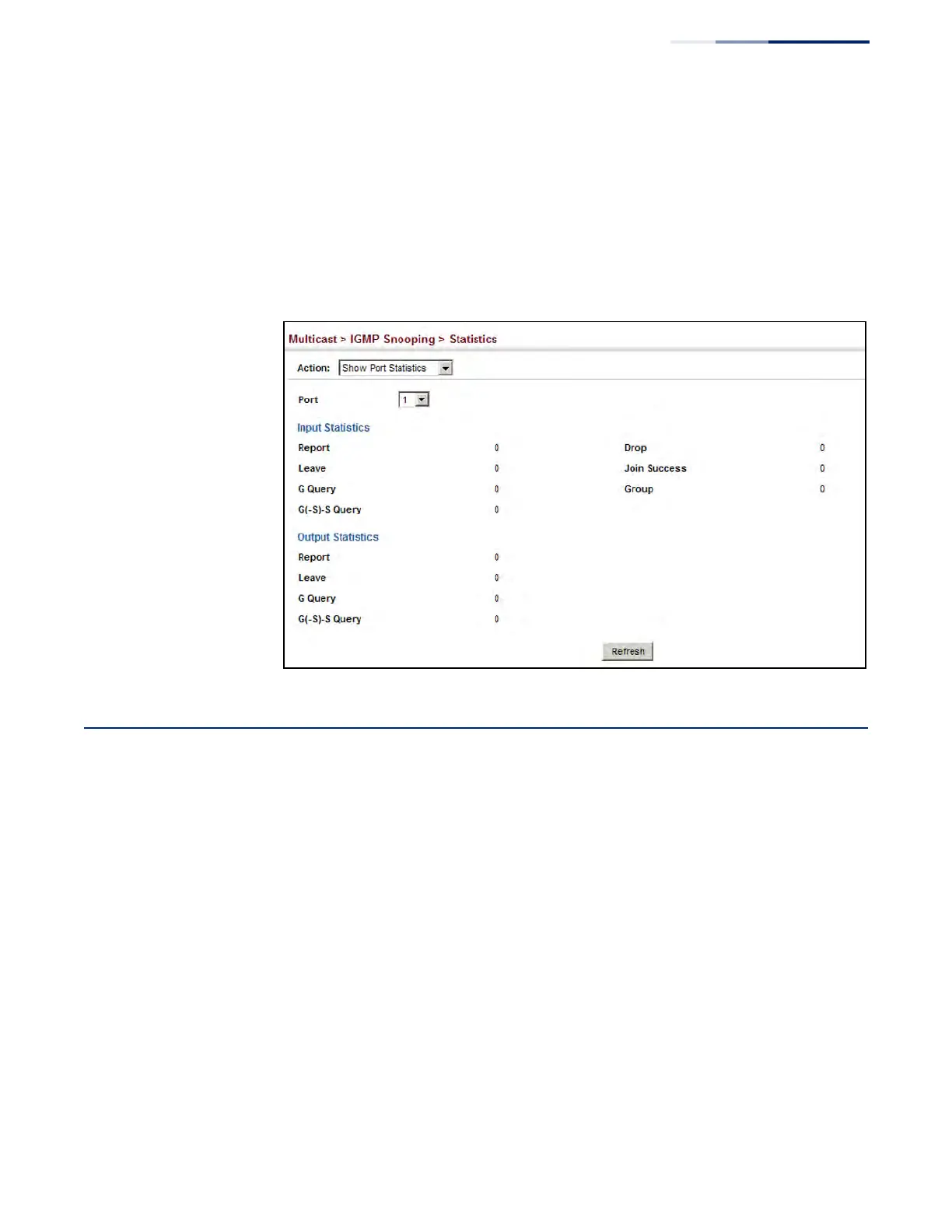Chapter 14
| Multicast Filtering
Filtering and Throttling IGMP Groups
– 561 –
To display IGMP snooping protocol-related statistics for a port:
1. Click Multicast, IGMP Snooping, Statistics.
2. Select Show Port Statistics from the Action list.
3. Select a Port.
Figure 349: Displaying IGMP Snooping Statistics – Port
Filtering and Throttling IGMP Groups
In certain switch applications, the administrator may want to control the multicast
services that are available to end users. For example, an IP/TV service based on a
specific subscription plan. The IGMP filtering feature fulfills this requirement by
restricting access to specified multicast services on a switch port, and IGMP
throttling limits the number of simultaneous multicast groups a port can join.
IGMP filtering enables you to assign a profile to a switch port that specifies
multicast groups that are permitted or denied on the port. An IGMP filter profile
can contain one or more addresses, or a range of multicast addresses; but only one
profile can be assigned to a port. When enabled, IGMP join reports received on the
port are checked against the filter profile. If a requested multicast group is
permitted, the IGMP join report is forwarded as normal. If a requested multicast
group is denied, the IGMP join report is dropped.
IGMP throttling sets a maximum number of multicast groups that a port can join at
the same time. When the maximum number of groups is reached on a port, the
switch can take one of two actions; either “deny” or “replace.” If the action is set to
deny, any new IGMP join reports will be dropped. If the action is set to replace, the

